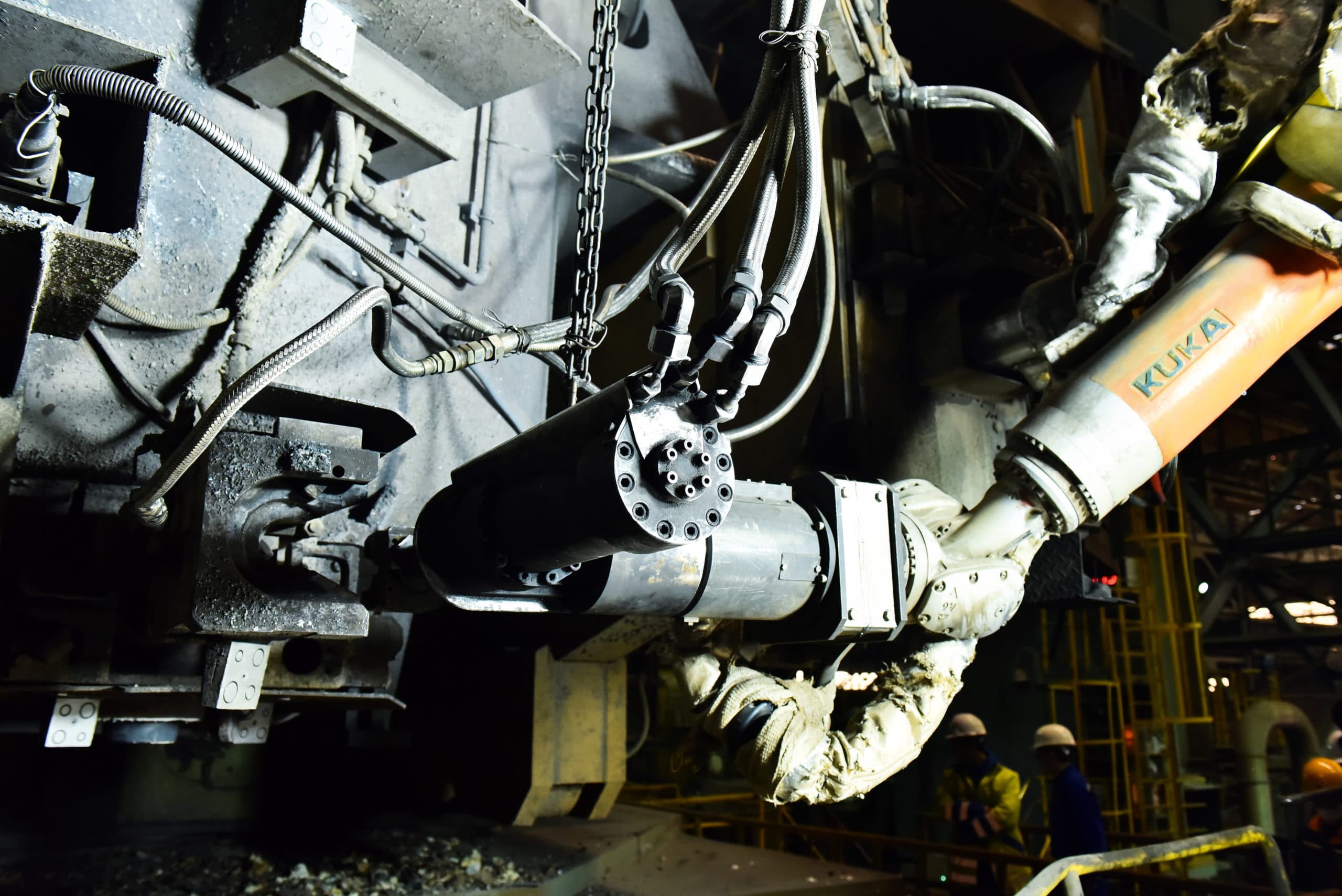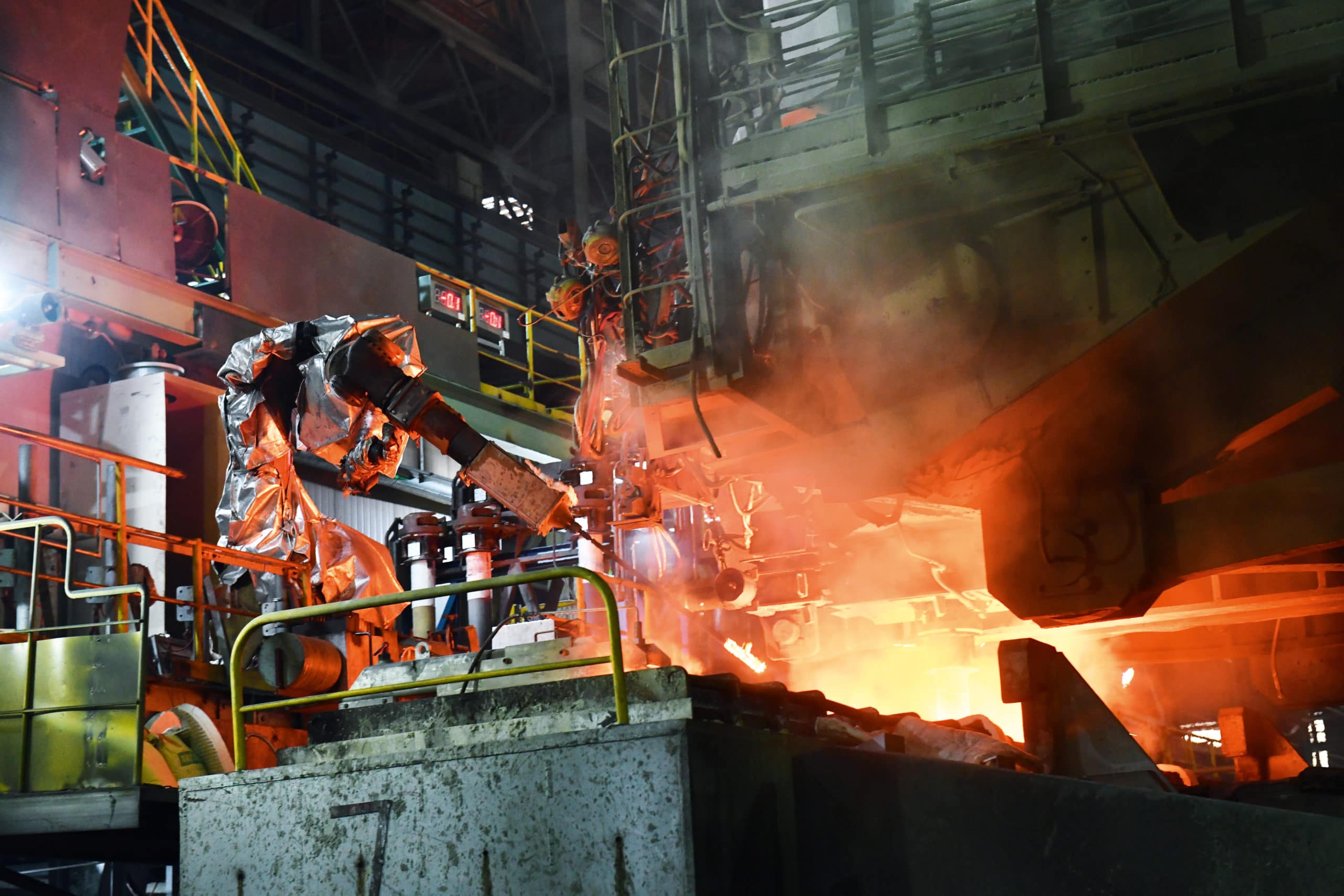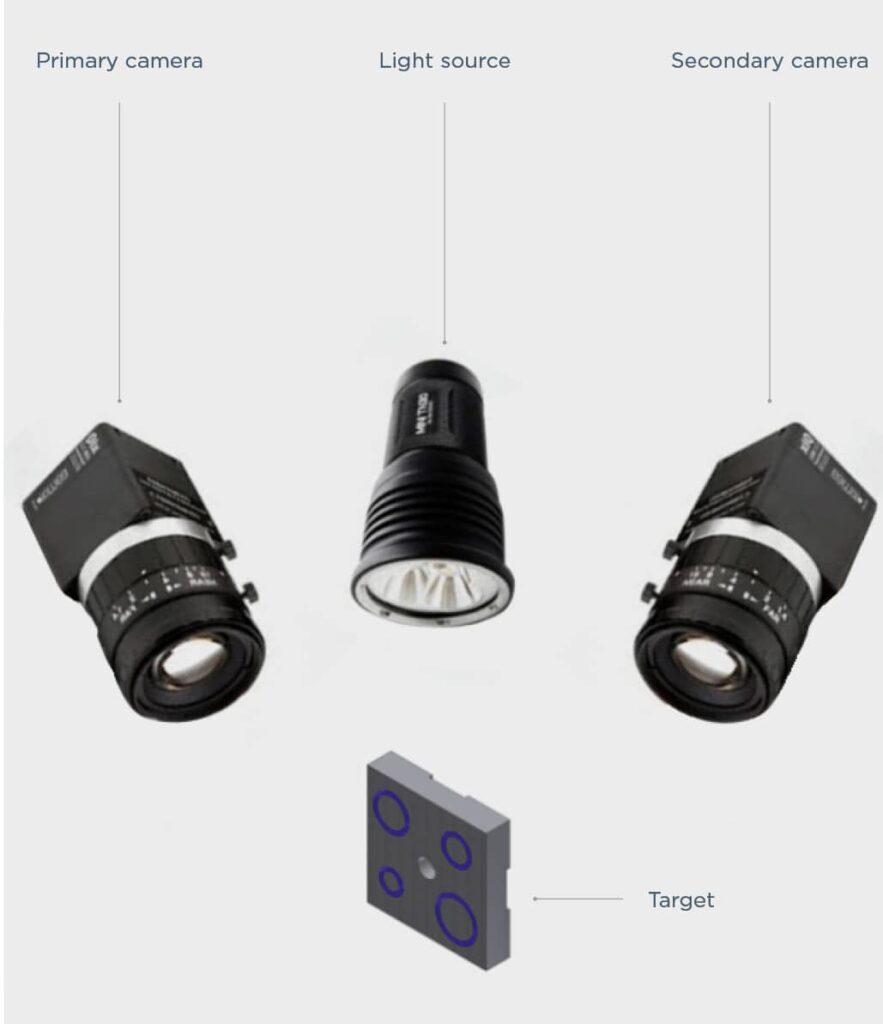This post is also available in: 简体中文 (Chinese (Simplified))
The continuous-casting process involves discontinuous operations that are critical for the quality of the cast product and that have to be performed dangerously close to the liquid steel. Luckily, recent advances in robot technology and machine vision have made it possible to fully automate many of these tasks—replacing semi-automatic manipulators operated by human personnel. The LiquiRob system from Primetals Technologies has been able to perform tasks such as shroud manipulation, probe handling, and feeding tundish powder for quite some time. Now we have added fully automated ladle connection to its list of capabilities.
For years, steel producers have been increasing their efforts to improve working conditions and workplace safety for human operators. In the area of continuous casting, automated functions and manipulators have therefore become the norm. They are necessary to perform a range of discontinuous tasks that are integral to the process and critical for product quality:
- Connecting or disconnecting equipment to and from the ladle: the slide-gate cylinder, couplings for gases and electrical signals, and the ladle shroud
- Oxygen lancing of the ladle when the slide gate is stuck
- Covering the steel bath in the tundish with powder
- Measuring temperature and contents of accompanying elements (O2, H2)
- Steel sampling in the tundish
Unfortunately, the devices currently being used to accomplish these tasks have serious shortcomings: They operate only semi-automatically, requiring the presence of human operators in hazardous areas at least some of the time; and the equipment is mostly designed for a single, highly specific task—making it hard to extend or modify its functionality.
Combining the latest in robot technology with state-of-the-art machine vision, our LiquiRob system has made it possible to fully replace human-operated semi-autonomous manipulators for every one of the aforementioned tasks in continuous casting—bringing the industry closer than ever to the ultimate goal of full automation and zero workplace injuries.


Fully Automated Ladle Connection
The area surrounding the charging side of the ladle turret has recently been the focus of activity for Primetals Technolgies: This is an especially critical spot, where a whole number of tasks have to be performed directly at—and in some cases under—a ladle full of liquid steel. In the overwhelming majority of continuous casting plants, it is human operators who insert the hydraulic cylinder into the slide gate when a full ladle arrives at the turret. Another set of manual tasks involves connecting couplings for various media, such as argon for sealing, air for slide-gate cooling, and electrical signals for slag detection.
To fully automate these tasks, the LiquiRob system employs a standard 6-axis industrial robot that can withstand the harsh environment of the plant and that performs both cylinder manipulation and media connection. As the robot has to actively pick and position different parts, we have developed a pneumatically actuated tool changer that sits between the robot and the standardized counterparts. Sequences for connecting or removing media or a slide-gate cylinder to or from ladles are started remotely via an human-machine interface. And a communication interface to the plant’s programmable logic controller ensures that all necessary preconditions (like turret position and height) are met prior to starting any sequence. Another important aspect of the robot system is the safety concept—to avoid harming personnel that might be present in the vicinity of the robot. A fence around the robot area with safety locks ensures that the robot will only move when the doors are confirmed closed and locked from the outside. Besides the new functions surrounding the ladle turret, LiquiRob can help automate a range of other tasks, greatly benefiting workplace safety by reducing human presence close to the liquid steel.
LiquiRob performs tasks directly at or under ladles full of liquid steel—substantially improving workplace safety in continuous casting.
Automatic Shroud Manipulation
To control the flow from the ladle into the tundish and to prevent the liquid steel from picking up oxygen, the ladle shroud has to be attached to the ladle before opening the slide gate. This is typically done manually with a simple mechanical arm or by means of a hydraulically assisted manipulator—which, again, requires human presence close to liquid steel. In order to improve safety, this task can be fully automated with LiquiRob. Using machine vision for accurate positioning, the robot connects the shroud to the nozzle. This is facilitated by a novel bayonet coupling on the shroud that guarantees the tightest-possible connection between the two parts: It allows the clamping force between the shroud and the short nozzle to be adjusted and can follow the movements of the slide gate during opening and closing without any relative movement—eliminating abrasion at the refractory nozzle tip that occurs when shrouds are handled by manipulators.
Probe handling
As opposed to shroud or slide-gate manipulation, the robot movements for performing tundish measurements or taking samples are not dependent on the exact position of any piece of movable equipment on the caster. Thus the tasks can be performed without camera input and adaptive robot paths. By using the automated tool changer, the same robot that handles shroud manipulation can be be used for measuring things like temperature, O₂, or H₂.
Feeding tundish powder
The liquid steel in the tundish needs to be kept from picking up ambient oxygen, which is normally achieved by applying tundish powder. The process usually involves operators in the tundish area, who throw bags of tundish powder into the trough. The LiquiRob that performs shroud manipulation is capable of handling high loads, so it can easily use a shovel filled with powder and empty it across several positions in the tundish. Numerous tests with samples of various powders have been executed to achieve high feeding rates—at the current stage, it takes less than ten seconds to feed 90 kilograms of powder. At this rate, the required cycle time for powder feeding can be easily achieved.
Industrial robots are designed for repeating the very same movements with the highest precision and at great speeds. Needless to say, the conditions we encounter in steel plants are rarely that straightforward. To take an example, the typical position accuracy of a ladle on the ladle turret is in the range of ±250mm in each horizontal direction. Moreover, turrets lift and lower the ladles without precise positioning, meaning that the position of a ladle can vary widely from one ladle to the next. So in order to allow a robot to interact with the equipment in any way, it first has to identify its exact position.
LiquiRob solves this problem with the aid of a stereoscopic camera system that is able to exactly identify the position of special targets in all three dimensions. These targets are mounted in predefined positions on the ladle and on the ladle turret. The resulting high reliability of the position measurement is one of the key elements in the successful deployment of LiquiRob in the dusty environment of a casting machine.



